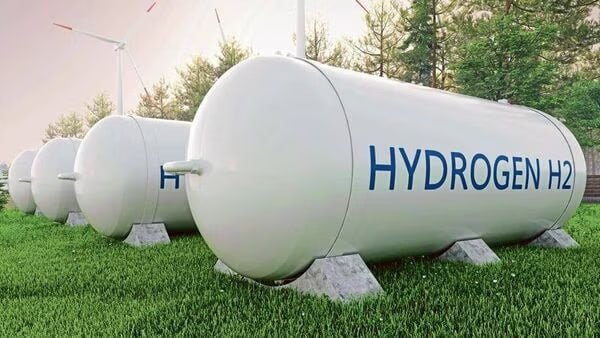L&T Electrolysers has been awarded the ₹444 crore subsidy to establish 300 MW annual electrolyser manufacturing capability, contributing to the ₹17,490-crore government initiative to advance green hydrogen and electrolyser production in India.
New Delhi’s Green Hydrogen Promotion Scheme Update
In a recent development, L&T Electrolysers Ltd and Matrix Gas and Renewables Ltd have emerged as the beneficiaries of incentives under New Delhi’s flagship green hydrogen promotion scheme. This followed the withdrawal of Jindal India Ltd, a BC Jindal Group company, due to missing the February 3 deadline to submit bank guarantees required for formal enrollment in the scheme.
The Scheme Details
The ₹17,490-crore Strategic Interventions for Green Hydrogen Transition (Sight) scheme aims to provide subsidies to companies for establishing electrolyser manufacturing plants in India. Notably, Jindal India’s decision to pull out of the scheme was attributed to disagreements with its overseas technology partner.
Awarded Incentives
L&T Electrolysers has garnered maximum incentives amounting to ₹444 crore for the establishment of a 300-megawatt annual electrolyser manufacturing capacity. This allocation surged from an initial 63 MW as a result of Jindal India’s withdrawal. Similarly, Matrix has been granted incentives worth ₹93 crore for setting up a 63 MW annual electrolyser manufacturing capacity.
Administrative Oversight
The scheme, under the purview of the Ministry of New and Renewable Energy (MNRE), is managed by the Solar Energy Corporation of India (Seci). However, MNRE and Seci were not available for immediate comments, and queries directed at L&T and Matrix also remained unanswered.
Other Companies Involved
Jindal India, initially selected along with seven other companies, sought incentives to establish a 300 MW annual electrolyser manufacturing capacity. These other companies include Reliance Electrolyser Manufacturing Ltd, Ohmium Operations, John Cockerill Greenko Hydrogen Solutions, Adani New Industries Ltd, Homihydrogen Private Ltd, and Advait Infratech Ltd.
The recent developments in the green hydrogen promotion scheme reflect the growing momentum in India’s efforts to bolster its clean energy transition. Now, with L&T Electrolysers and Matrix Gas and Renewables stepping into the spotlight, the landscape for green hydrogen production in the country is set to undergo significant shifts.
Green Hydrogen Scheme Transforms with Second Tranche
A recent revamp of the Indian government’s green hydrogen scheme sees a reallocation of resources towards green hydrogen electrolyzer manufacturing, signaling a growing commitment to developing domestic production capacity in the emerging clean energy sector. Saurabh Agarwal, Partner at EY, emphasizes the strategic significance, stating, “This initiative, if successful, could contribute significantly to India’s energy independence and self-sufficiency goals.”
Under the Strategic Interventions for Green Hydrogen Transition (Sight) scheme, eight companies have been selected to advance domestic production of green hydrogen and electrolysers. Notably, two of the chosen companies are poised to establish approximately 200 MW of cumulative annual electrolyser manufacturing capacity using indigenously developed technology. The remaining six companies, including Jindal India, are tasked with setting up a total of 1,200 MW of electrolyser capacity utilizing various technology stacks.
The initiative is a key component of the government’s National Green Hydrogen Mission, designed to bolster the local production of green hydrogen and associated technologies in India.
Transformative Potential of Electrolysers
A pivotal element in the quest for sustainable energy solutions, an electrolyser employs electricity to split water into elemental oxygen and hydrogen, offering an eco-friendly alternative to traditional fossil fuels. This innovative process aligns with the broader global shift towards clean and renewable energy sources.
Notable Industry Dynamics
The evolving landscape of the green hydrogen sector witnessed Jindal India Solar Energy’s withdrawal from the government scheme designed to promote clean energy. This shift follows the company’s prior decision to opt out of a production-linked incentive scheme for vertically integrated high-efficiency solar modules in 2022. Subsequently, the capacity relinquished by Jindal India was awarded to units of Reliance Industries and the Adani group.
Amidst these industry realignments, L&T Electrolysers Ltd and Matrix Gas and Renewables Ltd emerged as prime beneficiaries of the Sight scheme, securing subsidies following Jindal India’s departure from the initiative.
Future Projections
With the imminent preparation of the second tranche of the Sight scheme, the landscape of green hydrogen and electrolyser manufacturing in India is poised for further transformation. As the government continues to prioritize sustainability and energy self-sufficiency, the long-term impact of these initiatives on the country’s energy landscape remains a focal point of interest for industry observers.











